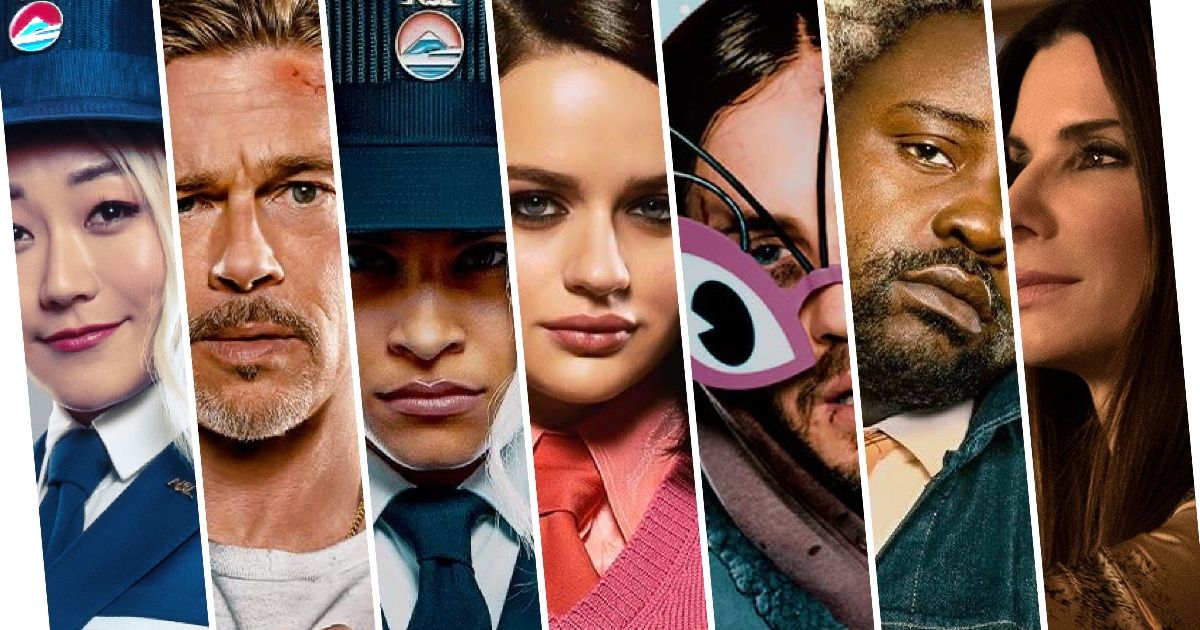How Bullet Train Used Humor and Chaos to Build Its Marketing Strategy
How Bullet Train Used Humor and Chaos to Build Its Marketing Strategy
When you think of a fast-paced action movie starring Brad Pitt, you likely picture explosive sequences, intense fight scenes, and high-stakes drama. But *Bullet Train*—with its quirky tone and star-studded cast—wasn’t just about thrilling action. It was about a wild ride, and its marketing campaign reflected that chaos and humor in the best possible way. From memes to character-focused teasers, the film’s promotional materials turned the typical action movie campaign on its head, using humor, irreverence, and high-energy visuals to get audiences excited. In this post, let’s dive into how *Bullet Train*'s marketing embraced the chaos and comedy that made the film stand out, and why that approach worked so well.
The Power of Humor and Chaos
When a movie has a premise like Bullet Train, it's hard not to think about the sheer fun of it all. The film, directed by David Leitch, follows an eclectic group of assassins on a high-speed train, each with their own agendas and quirky personalities. And that’s exactly what the marketing team highlighted: a rollercoaster of chaotic, often absurd, moments that perfectly matched the tone of the movie. Rather than just focusing on action shots or Brad Pitt’s star power, the marketing leaned into humor and playfulness from the get-go. From the first teasers and posters, the movie’s marketing embraced the chaotic energy of the film. We saw vibrant neon designs, humorous taglines, and bold visuals that captured the over-the-top feel of the film. The promotional materials seemed almost like a game, daring the audience to dive into this wild ride.
Character-Centric Campaigns
One of the standout features of Bullet Train’s marketing was its focus on the individual characters. In an era where ensemble casts are common, this film took an interesting approach by creating short promotional videos for each character, making sure every member of the diverse cast—played by stars like Brad Pitt, Joey King, Sandra Bullock, and more—felt unique and integral to the film’s identity. Each character’s backstory was teased, complete with quirky details and humorous dialogue, which immediately helped build interest. By humanizing these larger-than-life characters before the film’s release, the marketing team drew viewers in with the promise of memorable personalities rather than just action sequences. This wasn’t just a regular assassin film—it was one with colorful, dynamic characters, and that was evident in how they were promoted.
Social Media Strategy: Memes, GIFs, and Interactive Content
In addition to traditional trailers and posters, the Bullet Train team took full advantage of social media to connect with fans. The campaign was designed to be interactive, with plenty of shareable content that encouraged users to join in on the fun. Memes, GIFs, and behind-the-scenes footage flooded platforms like Twitter, Instagram, and TikTok. By tapping into the meme culture, *Bullet Train* created a sense of buzz that felt organic and relatable. Fans could engage directly with the content and share their excitement through humor, which is exactly the kind of energy the film itself embodied. Whether it was Brad Pitt's character trying to stay calm or the chaotic brawl scenes, the campaign used bite-sized, funny snippets that felt more like inside jokes for fans than standard movie promos.
The Star Power of Brad Pitt
Of course, no conversation about *Bullet Train*'s marketing is complete without talking about Brad Pitt. The marketing campaign did a fantastic job leveraging Pitt’s star power and well-established comedic charm. From interviews to social media posts, Brad Pitt became the central figure in generating buzz. His persona—chill yet charismatic—was the perfect fit for a film like *Bullet Train*, and the marketing campaign played on that. The actor's laid-back attitude and lighthearted promotional style helped set the tone for the film. Whether he was joking about the chaos on the train or sharing funny tidbits about the movie, Pitt became an extension of the film’s quirky, high-energy atmosphere.
The Success of a Unique Approach
The success of Bullet Train’s marketing strategy lies in its ability to balance chaos with coherence. It wasn’t just about bombarding audiences with the usual action movie trailers or relying on Brad Pitt’s fame. Instead, the campaign created an immersive experience that invited audiences to get excited about the unpredictability of the story, the wild characters, and the humor that underpinned it all. By leaning into vibrant visuals, interactive social media content, and an emphasis on character-driven promotion, the marketing campaign for Bullet Train felt like a natural extension of the film itself. It made the film accessible, fun, and something audiences were eager to see—not just for the action, but for the laughs, the quirky characters, and the adrenaline-fueled ride it promised.
Conclusion
In the end, Bullet Train’s marketing strategy was a masterclass in using humor and chaos to build excitement. By tapping into the power of memes, star power, and character-focused storytelling, the campaign captured the film’s high-energy, unpredictable spirit. It didn’t just get people talking—it got them laughing, sharing, and anticipating the wild ride that was about to unfold on screen. What did you think of Bullet Train's marketing? Did it get you excited to jump on the ride, or was it the film’s action-packed plot that hooked you? Let us know in the comments!
Sources:
https://www.rottentomatoes.com/m/bullet_train_2022
https://cinematicslant.wordpress.com/2022/07/27/bullet-train-marketing-recap/


Comments
Post a Comment